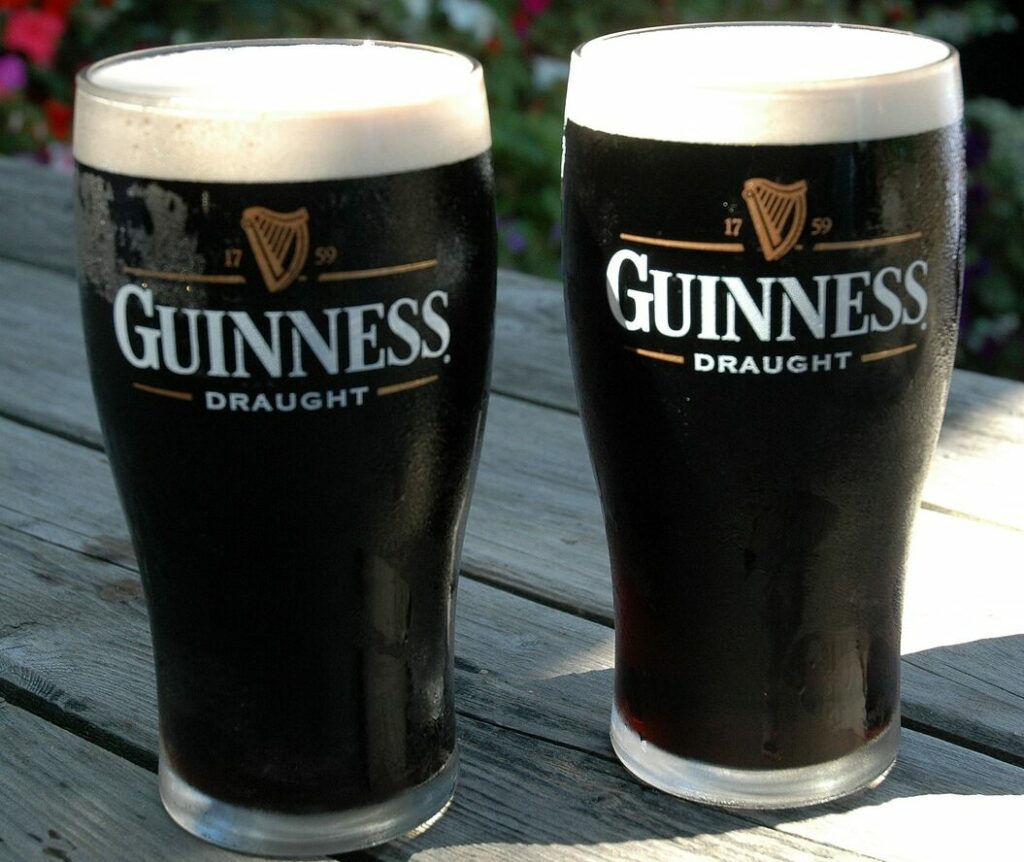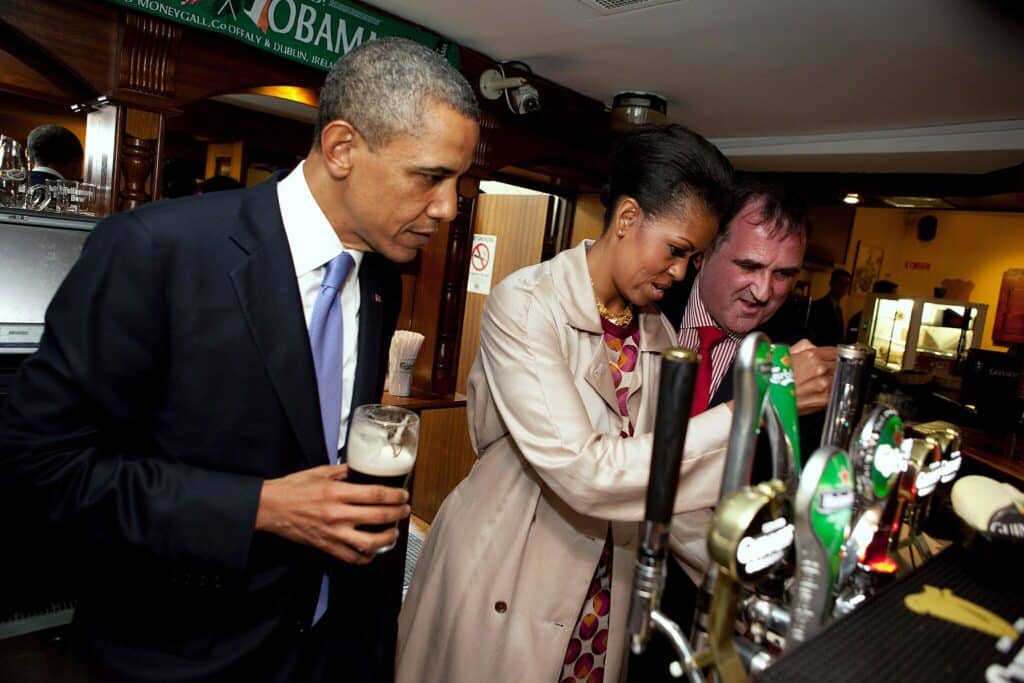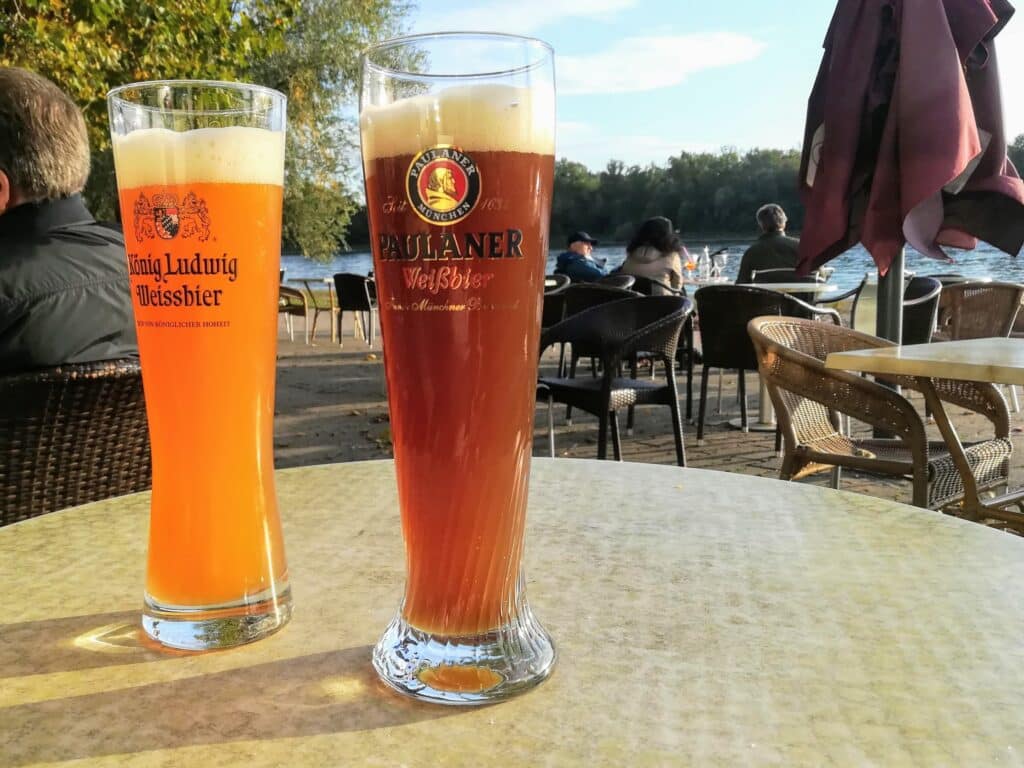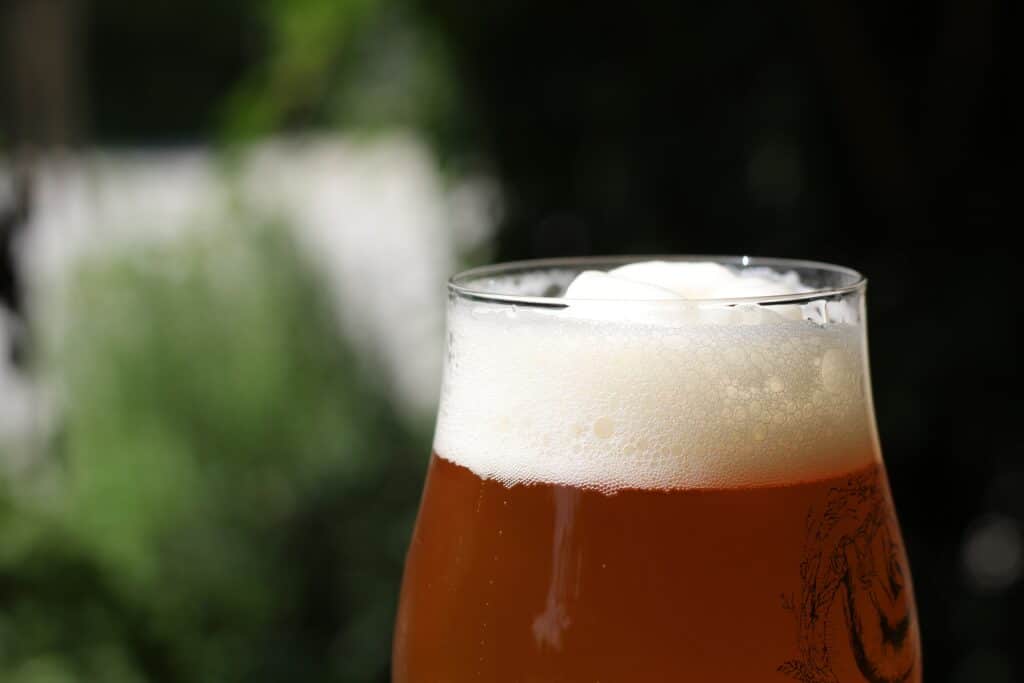Disclaimer: This post may contain affiliate links, from which I may earn a small commission at no extra cost to you. Thank you for supporting Ale Affair.
This topic is very close to my cold, British heart: the pint. A pint of beer is a traditional serving size equal to 568 ml in the UK, commonly used in pubs. It’s a glorious thing. But why is beer served in pints, and why are we Brits so obsessed with this measurement? Is this the same worldwide? And will the pint last forever? I have perfectly teed these questions up as this article thoroughly answers them. So, grab your pint and explore why beer is served in pints.
The History of the Pint
The history of the pint as a unit of volume measurement spans many centuries and is rooted in the varied systems of weights and measures used throughout Europe. The term “pint” is derived from the Old French word “pinte” and the Latin word “pincta,” meaning “painted,” indicating the marks placed on the side of a container to denote capacity.
Ancient and Medieval Origins
The pint’s history begins in the ancient world, where various cultures used different standards for measuring liquids and grains. The specifics of these early units varied greatly, and there was no standardisation between regions.
In medieval England, the measurement system began to become more familiar. The pint was used as a measure for both dry and liquid substances. Its exact volume, however, could vary significantly depending on the region and the substance being measured.
The British Imperial System
Some articles mention that King Charles II established a standard ratio for tankards, called the “imperial pint,” which measured 568 millilitres in the 17th Century. However, I don’t believe that is the truth.
The real standardisation of the pint came with the British Imperial system, established in the 1824 Weights and Measures Act. This system defined the imperial pint in terms of the gallon, which was set to be precisely 277.42 cubic inches of distilled water weighed in air, with a brass weight at 62 degrees Fahrenheit and a barometric pressure of 30 inches of mercury. One gallon was defined to contain eight pints, making the imperial pint equal to 20 imperial fluid ounces or about 568.26 ml. This was all during the reign of King George IV to ensure standardisation across the British Empire.

Metrication and Modern Use
Throughout the 20th century, many countries adopted the metric system, phasing out traditional units like the pint in favour of litres and millilitres. However, the pint remains used in the United Kingdom, the United States, and a few other countries for certain applications, notably in serving beer and milk. However, we can forget about the milk.
In the UK, despite the country’s metrication process, the pint is still legally used as a unit of measure for draught beer and cider. Following negotiations with the UK, the European Union allowed the continued use of the pint for beer and milk, recognising its cultural significance. If they hadn’t, I’m sure Brexit would have come sooner!
Why is Beer Served in Pints?
Serving beer in pints is a tradition deeply rooted in British history and the glorious British pub culture – trust me, I’m British. It has spread to various parts of the world, particularly in countries with British influence. There are several reasons why pints have become the standard serving size for beer.

Historical Standardisation
Legal Standardisation: As mentioned, in the UK, an Act of Parliament in the early 18th century legally defined the pint as a standard measure for ale and beer. Undoubtedly, this is one of the best things the Government has done. This legal standardisation helped ensure that pub-goers knew exactly how much beer they were purchasing, promoting fairness and transparency in transactions between alehouses and their customers.
Practicality
Ideal Volume: Many, including myself, consider a pint (approximately 568 ml in the UK) the ideal volume for serving beer. It’s enough to fully enjoy the beer’s flavours without it warming up too much before finishing. The volume is satisfying for consumers without being overly excessive, striking a balance between enjoyment and moderation until you’ve had more than seven!
Economic Efficiency: Pints offer a convenient and economically efficient way to price and sell beer for pubs and breweries. Using a standard size simplifies inventory management and pricing strategies and reduces the complexity of service.
Cultural Significance
Tradition: The pint has become more than just a unit of measure; it’s a symbol of pub culture, especially in the UK and Ireland. The idea of going out for a pint is deeply ingrained in these countries. It is associated with camaraderie, relaxation, and community. Kate Fox, who wrote: “Watching the English” (highly recommend!), discussed this in great detail.
Experience and Expectation: Us drinkers have come to expect certain types of beer to be served in pints. The size of the glass can affect the perceived taste and quality of the beer, with the pint often being associated with traditional and craft beers. Serving beer in a pint glass can enhance the overall drinking experience, from the visual presentation to the first sip.
Standardisation Across Industries
International Influence: While many countries have adopted the metric system for most measurements, they just can’t get rid of the pint. It has remained a standard unit for serving beer in many parts of the world. This persistence is partly due to the influence of British pub culture and the international craft beer movement, which often embraces traditional serving sizes and methods.
Pints Worldwide
A European Aversion to the Pint Glass
Crossing the English Channel, we find that the concept of a ‘pint’ transforms. In many parts of Europe, beer is often served in quantities ranging from 250ml glasses to larger half-litre (500ml) volumes, depending on beer type and country. The closest equivalent to a pint would be the half-litre, a standard often used in beer-focused nations like Germany and Belgium. In some cases, the Germans may even out-drink the Brits and go for a hefty stein, such as at Oktoberfest.

This serving size isn’t merely a nod to the metric system; it aligns with European beer-drinking philosophy. The smaller portions allow tasting a broader range of beers without overwhelming the palate, especially in regions known for varied and robust brews.
Belgium is globally renowned for its diverse beer styles, such as the fruity Lambics, the Trappist beers brewed in monasteries, the potent Quadrupels, and the dry, refreshing Saisons. Each has distinct serving needs, often smaller than a pint.
France, however, does use a pint, considering it’s their word to begin with, but it equates to a whole litre – nearly twice the volume of a British pint! More common measures include a ‘demi’ (half), equal to 250ml and a ‘precision’, closely matching the familiar pint.
This variation underscores that beer measures, much like the brews themselves, reflect a nation’s culture, history, and drinking customs. From half-litre German lagers to intricate Belgian ales in stemmed glasses.
British Pint vs American Pint

If you’ve ever ordered a pint in the US, you might have noticed something slightly off. Despite asking for a ‘pint’, you received something less than expected. An American pint is indeed smaller than a British pint. But why?
The explanation lies in the discrepancy between the US customary units and the British imperial system. The imperial system defines one pint as 20 fluid ounces. In contrast, the US conventional units define a pint as only 16 fluid ounces. So, in the US, you’re receiving 4 fluid ounces (118ml!) less beer than in the UK. Daylight robbery!
This difference can be traced back to historical measurement systems before standardisation. Upon gaining independence, America retained the British Ale Pint, which was 16 fluid ounces. Not only did they throw away our tea, but they short-changed their beers.
The Future of Beer Serving: Will Pints Prevail?
While the pint is likely to continue to be a significant part of beer culture in many places, its dominance as the default serving size may be challenged by evolving consumer preferences, technological innovations, and broader societal trends. The future of beer serving might be characterised by greater diversity and personalisation in serving sizes, including the enduring presence of the pint among these options.
Potential Scenarios for the Future
Pints Remain Popular: The pint could continue to be a popular serving size due to its historical significance, practicality, and cultural embeddedness in certain regions. I can’t see it losing popularity in countries like the UK and Ireland.
Diversification of Serving Sizes: There may be a move towards more varied serving sizes, including smaller (for high-strength or speciality beers) and larger formats (for session beers or group servings), catering to a broader range of consumer preferences and occasions.
Customisation and Personalisation: Advances in technology could lead to more personalised beer serving experiences, where consumers can choose their exact serving size based on personal preference or recommendations tailored to the beer’s characteristics and the consumer’s taste profile.
Sustainability-Driven Changes: Environmental considerations might drive innovation in serving practices, such as adopting reusable containers with standard sizes that differ from the traditional pint or incentives for consumers to choose specific sizes based on environmental impact.
Summary
Let’s make this article pint-sized. Why is beer served in pints? Well, the pint, a unit of volume with ancient origins, is deeply embedded in various cultures, especially within British pub culture, where it signifies camaraderie and tradition. Historically standardised for fairness in ale transactions, the pint balances enjoyment with practicality, which is ideal for the flavours and experience of beer drinking. However, serving sizes vary globally, reflecting diverse drinking customs. With evolving consumer preferences and technological advances, the future of beer serving may see more personalised and environmentally conscious choices alongside the enduring pint. Let me know if a pint glass is your favourite for drinking beers!
FAQs
Why Does Beer Taste Better in a Pint Glass?
Beer tastes better in a pint glass due to its shape, enhancing aroma and flavour. The wider top allows for a better sniff, which is crucial for taste. At the same time, the glass’s size maintains temperature and carbonation, providing an optimal drinking experience. The traditional feel also adds to the enjoyment.
What is the British Slang for a Pint of Beer?
In British slang, a pint of beer is often simply called a “pint.” Phrases like “Fancy a pint?” or “Let’s grab a pint” are common. Some might refer to it more colloquially as a “jar” or use specific beer names, but “pint” remains the universally understood term for a beer serving.
Do Americans order a “pint”?
Americans do order a “pint” of beer, commonly used in bars and pubs. However, the US pint is smaller (16 fluid ounces) than the British pint (20 fluid ounces). Despite the difference in size, the term “pint” is widely recognised and used across the US for ordering beer.
Share Now!
Raise a glass to knowledge! Each article you share pours a little more wisdom into the world, frothing with ideas and bubbling with insights.




